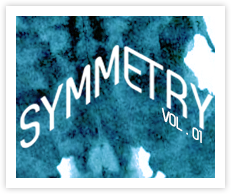

How to be a Stylish Grammarian
Alison DeLory // November 17, 2011

It’s the Mount’s fourth annual Celebrate Writing week. I love that the Mount has attached the word “celebrate” to “writing” because as difficult as writing can be, I try to think about it as satisfying and fun. (Public relations students know well the power of framing!) Sadly, I realize many people do not revel in the writing process and especially balk at the notion of studying grammar. I am not among them. Grammar can be creative, interesting, and exploratory, too—especially as English Professor Kristin Domm presented it in the Celebrate Writing workshop: Grammar as Style.
Grammar as style is an interesting approach to grammar, regarding it not as a set of rules but instead as the choices a writer makes in terms of what words to select, their order, and punctuation. It is the antithesis of prescriptive grammar, which frustrated learners who could never figure out, for example, when to use “who” or “whom.” Grammar these days is less about right and wrong, and more about what works best for a certain genre. While it may be okay to begin a sentence with a preposition in an email or blog post, it may be less acceptable in a business report or academic paper. And that gives writers a freedom to experiment (see what I did there with And?) like never before.
The key is to figure out what works where. Domm emphasized that you have to know your topic, audience, purpose and genre when you’re writing. Then, you must make effective choices about organization and language. You cannot break the conventional rules haphazardly; rather, you must do so with understanding and intent. Guidebooks such as those used by the Mount’s English and Communication Departments, including the CP Style Guide, The Brief Penguin Handbook (Faigley, Graves & Graves, 2011) or Conversations in Writing (Sargent & Paraskevas, 2005), are still excellent resources even in this new era of grammar as style, and I, for one, will continue to refer to them regularly. But I am also unafraid to mix things up on occasion—to use personal pronouns in academic writing, to dangle a preposition at the end of a sentence, etc., when I can justify why it was the preferred choice.
The discussion veered into etymology, and I learned an interesting tidbit about why in English we call cows, “cows,” and the dead version on our dinner plates, “beef.” (Thanks to Dr. Susan Drain, also from the English Department, for explaining. It comes from the Norman conquest of England. The Normans were nobility while the Anglo-Saxons were poor peasants. The Normans, who could afford to eat meat regularly, spoke old French, so the words that passed into the English language for the various kinds of meat are the French words they used: beef = boef, pork = porc, mutton = mouton, venison = venaison.) Etymology, or the study of words and the historical development of their meaning, is both fascinating and useful in that it can teach us how to choose the best word today.
Domm then gave us exercises that challenged us to rewrite sentences eliminating wordiness, putting words back in, and suggesting rhetorical punctuation. She ended the session by sharing a brilliant video clip from Stephen Fry, the English actor, screenwriter, author, playwright, journalist, poet and comedian, on kintetic typography:
Celebrate Writing week continues until Friday and I strongly urge you to take part in one of the many excellent events it includes. You can find the schedule here.
